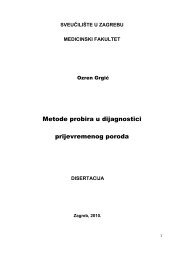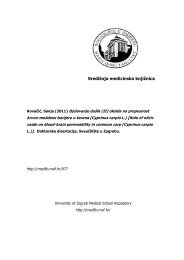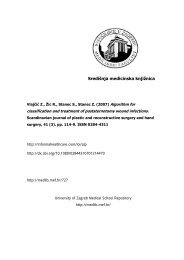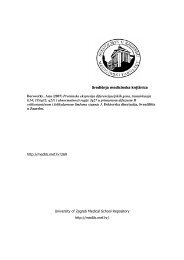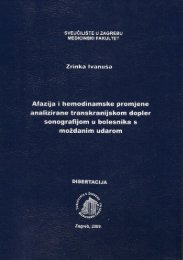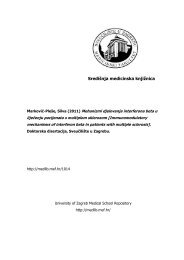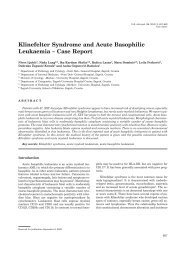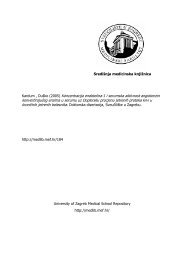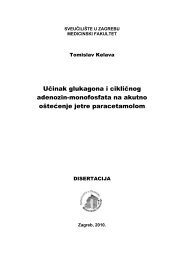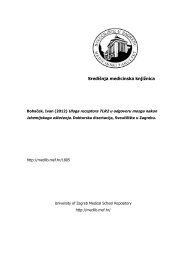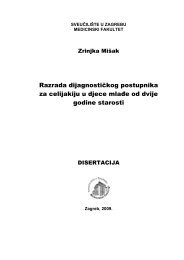Suture granuloma of the abdominal wall with intra-abdominal ...
Suture granuloma of the abdominal wall with intra-abdominal ...
Suture granuloma of the abdominal wall with intra-abdominal ...
Create successful ePaper yourself
Turn your PDF publications into a flip-book with our unique Google optimized e-Paper software.
leiomyomata. After both operations <strong>the</strong> patient was in good health and <strong>with</strong>out anysimptoms and complaints. She did not take any medications. Physical examinationrevealed a slightly tender mass, 10 cm in diameter, under <strong>the</strong> appendectomy scar in <strong>the</strong>right lower abdomen. The swelling was elastic and poor in mobility. O<strong>the</strong>r resistancescould not be found, and all o<strong>the</strong>r parts <strong>of</strong> <strong>the</strong> physical examination showed no fur<strong>the</strong>ranomalies.The preoperative laboratory findings and plain <strong>abdominal</strong> radiographs werenormal. Tumor markers were as follows: CEA=2.42 µg/L; AFP 1.24 µg/L; CA19.9=4.89kU/L and CA 125=5.80 kU/L. Abdominal ultrasonography demonstrated low-echoicmass lesion 8 x 8 cm just lateral to cecum and in communication <strong>with</strong> lateral <strong>abdominal</strong><strong>wall</strong>. No peristalsis or communication <strong>with</strong> <strong>the</strong> bowel lumen was observed.Esophagogastroscopy revealed chronic gastritis and colonoscopy revealed sigmoiddiverticulosis and normal mucosa in <strong>the</strong> cecum <strong>with</strong> normal ileocoecal valve. Multi-sliceCT scan showed inhomogenous <strong>abdominal</strong> mass <strong>with</strong> minimal vascularization in <strong>the</strong> rightlower abdomen 8.6 x 8 x 9 cm that communicate <strong>with</strong> <strong>abdominal</strong> <strong>wall</strong>. Abdominal <strong>wall</strong>was thickened, weak and bulging (Figure 1). There was no communication between <strong>the</strong>cecum and <strong>abdominal</strong> <strong>wall</strong> also confirmed by previous colonoscopy (Figure 2). From thisfindings <strong>abdominal</strong> <strong>wall</strong> tumor was suspected and elective operation was performed.After midline laparotomy and adhesiolysis, greater omentum was detached from<strong>the</strong> mass in <strong>the</strong> right lower abdomen located <strong>intra</strong>peritoneally. There was no free<strong>intra</strong>peritoneal fluid or fibrin deposits. The elastic mass was adherent to <strong>abdominal</strong> <strong>wall</strong>and <strong>the</strong>re was no communication <strong>with</strong> small and large bowel, retroperitoenal or vascularstructures. After partial omentectomy <strong>the</strong> mass was completely extirpated from <strong>the</strong><strong>abdominal</strong> <strong>wall</strong> (Figure 3). Histopathological examination revealed foreign-body<strong>granuloma</strong> <strong>with</strong> central abscess (Figure 4). The patient's early postoperative course was




